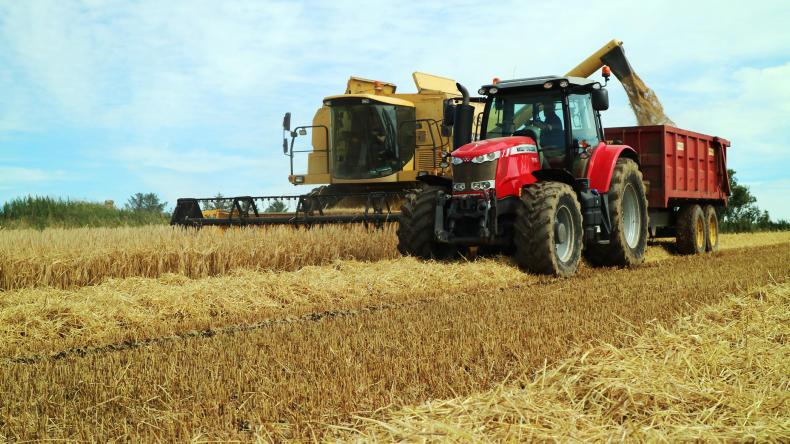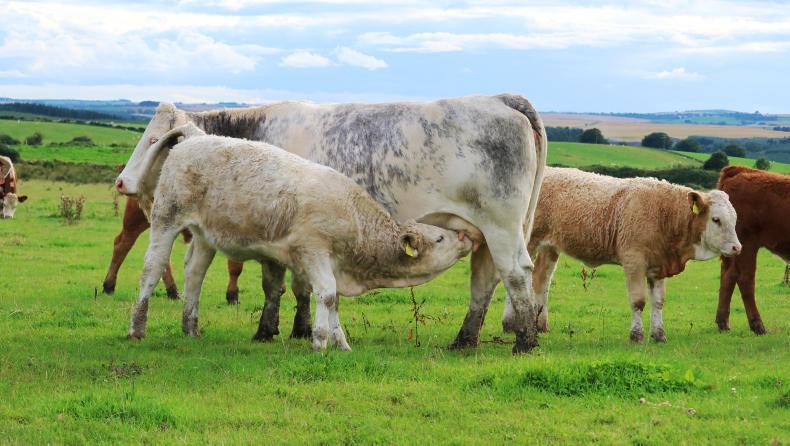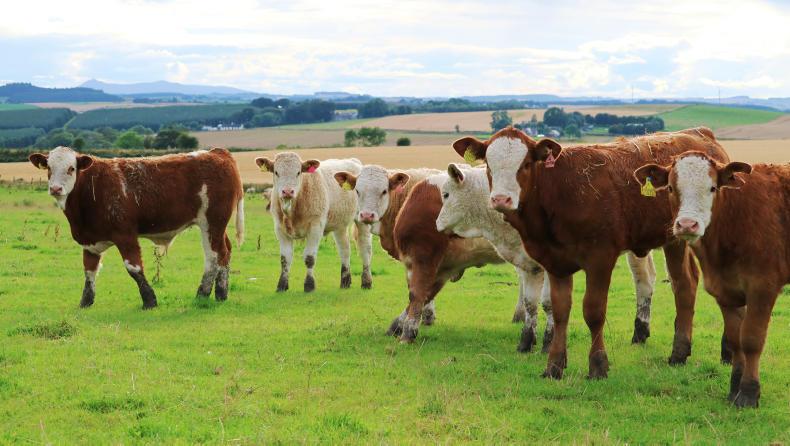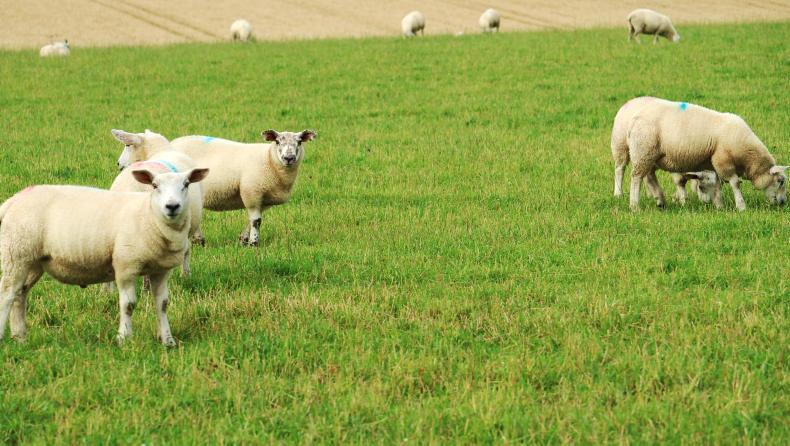Since our last update we’ve had another family wedding with dad and Fiona getting married here on the farm two weeks ago. It was nice to have the ceremony on the farm, showing just how important farming and farm life is to us all. They even managed to tie the knot using a calving rope!
As the weather tends to do, it started to rain just as the ceremony finished and we had to make our way to the marquee for cover. It’s been the same story for harvest so far this year. We managed to get all the winter barley harvested quite dry but it’s been fairly miserable since. At the time of writing, we have spring barley sprayed off nearly a week so here’s hoping we get a window to cut it.

Winter barley being harvested in early August.
Silage requirements
We have now made three cuts of silage from the Italian ryegrass ley. In total we estimate to have yielded 12tDM/ha from this ground in silage and now it has all the fattening lambs on it grazing some nice aftermath.
There were 170 bales in the third cut which equates to about 4.5 bales per acre. Again the aim here was for quality over quantity.
We calculated the tonnes of silage in both the first and second cut pits. This is length × breath × average height, divided by 45. This gives us 526t of first-cut and 309t of second-cut. Add to this the 170 bales of third-cut which gives us another 153t. In total, that gives us 988t in the yard. We have just had the pits cored by the Scottish Agricultural College (SAC) to get analysis of the quality. We hope it should be excellent as none of the three crops were growing longer than six weeks. Doing a quick count on the stock that are due to be wintered, we should have sufficient silage in the yard. We will do a detailed fodder budget once we get the analysis.

Spring-calved cow and her calf.
Grass
With silage ground now back available for grazing we should be at ease for grass, however the farm gets quite sticky in wet weather so we are a little bit shorter than we would like for August. Hopefully things will pick up over the next couple of weeks. Creep feeders are now with all the calves and they are really going through it during the poorer conditions.
Ammonia-treated straw
We feed ammonia-treated straw to the dry cows during the winter. We find this a great maintenance diet for the cows and reduces the amount of silage we need to make. It also has the added benefit that the cows dung is quite dry so it reduces the amount of straw needed for bedding. This year we have purchased wheat straw from a local farm for treating. The cows will be on the treated straw and pot ale syrup from housing up to early January when the earliest calving cows will start to get a 50:50 silage/straw mix.
Breeding
The breeding period has now finished for the spring herd with bulls removed last week. This year there was a 15 week breeding period which will reduce by a week or 10 days for the next few years. There was temptation to be ruthless this year and cut off breeding after 12 weeks but we need to keep the output of the farm up. The tight calving period will be achieved over a number of years. The plan is to scan all the cows in early October and identify those not in calf. If any older cows or poorer performers are not in calf they will be culled. If they are young and were late calving this year, they will be slipped into the autumn herd.

Spring-born calves.
This is the only year that we will allow slippage. From then on whatever is not in-calf will be culled. As the majority of the replacements coming into the herd are homebred, this will pay dividends in the years to come. We will naturally be selecting for more fertile cows that suit our farm system and the less fertile non-performers will get weeded out.
As autumn is a busy time on the farm with harvest, carting straw and sowing winter crops, we do not particularly want an autumn calving herd. We will however establish a small herd of autumn cows from the ones that are currently late summer and autumn calving. This is just to ease management so we have a more even batch of animals on the farm. As cows from this herd come to the end of their productive lives, they will not be replaced. However we will try to maintain or even increase total cow numbers by expanding the spring calvers.

These lambs have now moved on to graze silage aftermath.
Sheep
The lambs are now all weaned, this was done in two batches as we had a split lambing. We sold 19 lambs three weeks ago in Thainstone. They averaged 45.4kg and made £87 a head. We will hopefully have more drafted in the coming weeks.
Exclusive: One in three cattle inspections in Scotland ends in penalty